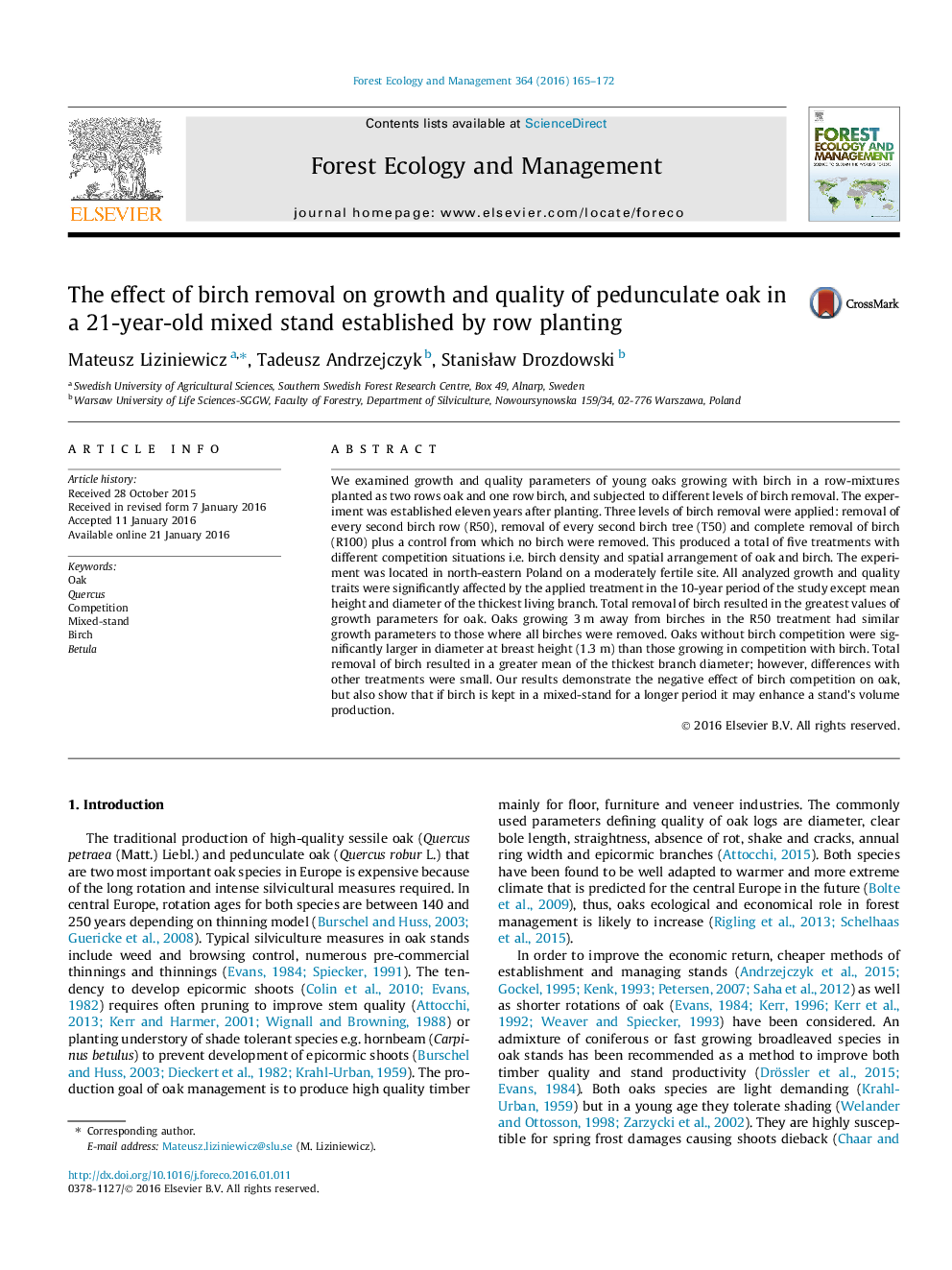| Article ID | Journal | Published Year | Pages | File Type |
|---|---|---|---|---|
| 6542405 | Forest Ecology and Management | 2016 | 8 Pages |
Abstract
We examined growth and quality parameters of young oaks growing with birch in a row-mixtures planted as two rows oak and one row birch, and subjected to different levels of birch removal. The experiment was established eleven years after planting. Three levels of birch removal were applied: removal of every second birch row (R50), removal of every second birch tree (T50) and complete removal of birch (R100) plus a control from which no birch were removed. This produced a total of five treatments with different competition situations i.e. birch density and spatial arrangement of oak and birch. The experiment was located in north-eastern Poland on a moderately fertile site. All analyzed growth and quality traits were significantly affected by the applied treatment in the 10-year period of the study except mean height and diameter of the thickest living branch. Total removal of birch resulted in the greatest values of growth parameters for oak. Oaks growing 3Â m away from birches in the R50 treatment had similar growth parameters to those where all birches were removed. Oaks without birch competition were significantly larger in diameter at breast height (1.3Â m) than those growing in competition with birch. Total removal of birch resulted in a greater mean of the thickest branch diameter; however, differences with other treatments were small. Our results demonstrate the negative effect of birch competition on oak, but also show that if birch is kept in a mixed-stand for a longer period it may enhance a stand's volume production.
Keywords
Related Topics
Life Sciences
Agricultural and Biological Sciences
Ecology, Evolution, Behavior and Systematics
Authors
Mateusz Liziniewicz, Tadeusz Andrzejczyk, StanisÅaw Drozdowski,
